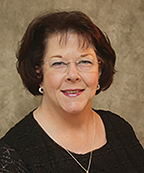by George Smith, Student Reporter

Students enrolled in Northwestern’s doctor of nursing program were in for a huge change last semester.
Normally, nursing students would be practicing the skills they learned in the classroom and applying them in the real world during the spring semester of their last year.
But they didn’t have the semester they expected.
“The big medical centers were closed to students,” said Dr. Pat Thompson, director of the Wisdom Family Foundation Doctoral Program for Rural Nursing Practice. “However, some of the students were able to stay in their clinics, with the preceptors and students going to patients’ cars to triage and care for them.”
With medical centers closing around the nation, the need for a type of healthcare that has long been left to Google and WebMD rose to meet the demands of the declining number of in-person clinics: telehealth.
Telehealth is an emerging source of healthcare. It provides a more personalized healthcare visit and puts quality care at a person’s convenience, Thompson said.
“Our students were able to see the tremendous explosion in use of telehealth,” she said. “Healthcare facilities are being innovative in incorporating telehealth in their practices on a permanent basis.”
Although it is in its infancy, telehealth has the capability to go beyond the traditional standard of healthcare for millions of Americans. It converges multiple disciplines into one online platform to provide accurate and personal care for those who are unable to meet healthcare providers in-person, officials say.
Patients can use tools to transmit exam information, including information about heart rates and lung function. However, some health issues cannot be safely addressed through telehealth. For example, patients who complain of acute abdominal pain would have to be physically examined by a nurse practitioner.
The university’s four nursing faculty members – Dr. Shelly Wells, Dr. Courtney Ballina, Dr. Yvette Lowery, and Thompson – were able to use 12 free case studies that were given to them by one of the software companies to which NWOSU students subscribe.
The students already do these case studies, so by adding additional case studies, faculty were afforded the opportunity to hold “grand rounds.” In these exercises, students presented information about patients.
The students discussed patients’ chief complaints, patients’ medical history, and what their physical exams revealed. That information comes through the software program. Then the students, led by the professor, brainstormed treatment plans.
This software also gives “expert feedback” from the case study’s developer. The students were able to accumulate all of their 192 clinical hours required for the spring semester and “bank” hours toward their summer clinicals. Student reactions to the grand rounds were positive because the discussions were more in-depth than what might have been possible in a busy clinic, Thompson said.
“The greatest challenge for DNP students was the cancelation of the annual residency week,” Thompson said.
Students have their physical assessment skills validated during this week. They learn about procedures such as suturing, checking for corneal abrasions, removing warts, and draining abscesses. All of these skills were taught via Zoom in one-on-one meetings with each student.
Additionally, the new Share Medical Center physician, Dr. Bryce Galbraith, presented a PowerPoint lecture on X-ray interpretation. The two physical therapists at Share presented a video presentation of orthopedic examination for ACL tears, sprains and rotator cuff injuries.
“We did hate it that the students missed out on the socialization aspect of residency week,” Thompson said. “They come from all over the state, Ada to OKC, to the Woodward area, Enid and Alva. And residency week is the week that they all meet face-to-face for the first time and build camaraderie.”
Seven nursing students were able to graduate at the end of July, and they would have had a celebration after their poster and podium presentations. But those activities were forced to be done virtually. The other doctor of nursing students were able to watch the poster presentations and get ideas for their future DNP projects, which must be completed before they graduate.
The DNP faculty are hoping for a semester of non-virtual classes, Thompson said, but they were able to think creatively to give the students the best experiences possible, given the constraints of the pandemic.
